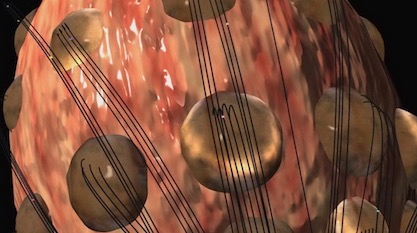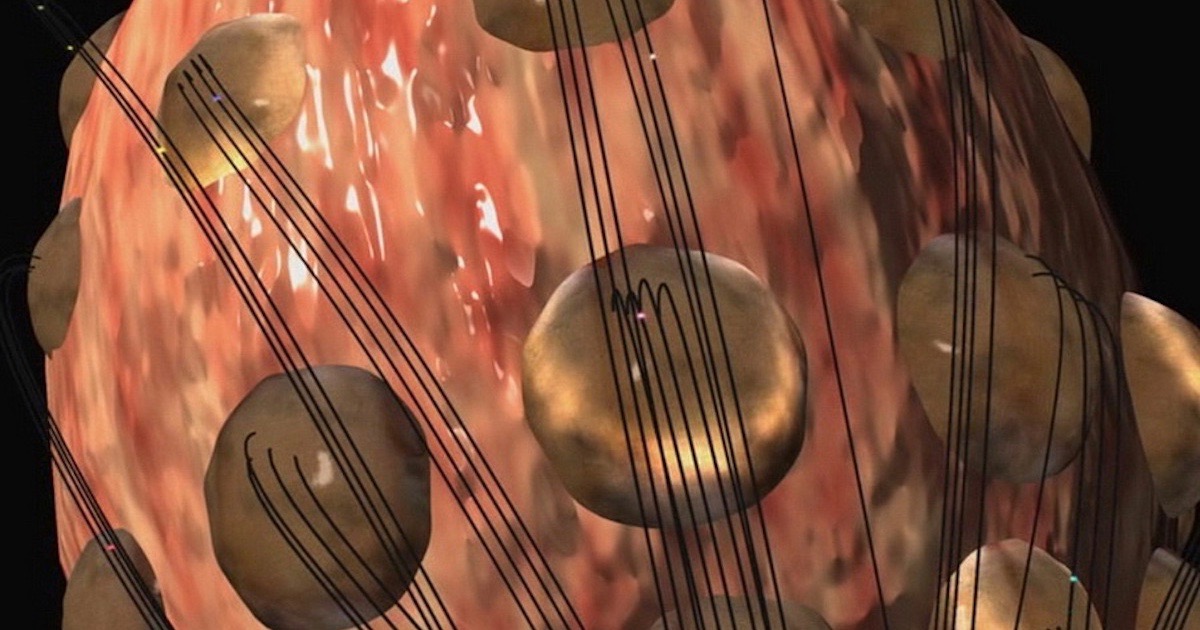 Intelligent Design
Intelligent Design
Sense of Smell Requires Optimized, Scalable Network Circuitry


The ability to detect and respond to molecules in the air — olfaction — is one of the most complex of our senses. It requires sorting, analyzing, and prioritizing a torrent of input data quickly. If you saw the animation “A Pacific Salmon’s Sense of Smell“ from Illustra Media’s documentary Living Waters, you got a feel for the complexity of neural wiring and organs that process the inputs. Here, we look at new findings about what it takes to run an olfactory function.
What Is Known
At Cold Spring Harbor Laboratory, winners of a NIH award for innovative neuroscience research have been creating models of olfaction. At Medical Xpress they explain what is known about the sense of smell:
Generally, scientists know that odor particles first enter through the nasal cavity, where odorant receptors expressed by olfactory receptor neurons in the sensory tissue bind to them. The olfactory bulb, a structure located in the forebrain of mammals, then processes information sent up from the receptors. Afterwards, the bulb sends out this information to several higher processing brain areas, including the cerebral cortex. There, the olfactory output messages are further analyzed and broadcast across the brain before they’re conveyed back to the bulb in a feedback loop. [Emphasis added.]
What Is Not Known
The same research team recently found that “it’s probable that the entry-level of olfactory inputs and the further processed bulb outputs care about different aspects of smell.” Previous models, they say, have not stood up to further testing. For instance, combining odorants should predict neural responses, but they often do not.
When it comes to smell, “we don’t really know what the brain is looking for, and we don’t know what physical or chemical features, if any, the brain extracts,” Albeanu said.
Their latest paper in Current Biology, “Scaling Principles of Distributed Circuits,” sounds more like a title about computer science than physiology, but it concerns primarily the problem of modeling olfaction as a signal-processing circuit. They found mathematical relationships between the incoming neural signals and the glomeruli that receive them, deducing that the ability to discriminate odors corresponds to the circuit size. The system grants scalability to the olfactory system across species: the more incoming neurons, the more glomeruli there are to process the inputs.
This scalability, which follows a power law, also allows the precision of the signal at one stage to be maintained throughout successive stages. The power law has an exponent of 3/2, which reflects the fact that the signal goes from 2-D (at the olfactory receptor neuron or OSN) to 3-D in the glomerulus. The glomerulus will receive multiple signals from numerous OSNs because numerous molecules impinge on OSNs simultaneously. This allows the glomerulus to calculate the concentration of the signal even if the OSNs have different sensitivities; the multiplicity of signals increases the signal-to-noise ratio, and reduces uncertainty about the environmental source. “In an optimal circuit,” they explain, “precision should be maintained in each successive stage: it is wasted if the downstream circuit cannot maintain it.” The 3/2 power law allows the olfaction system to maintain that precision.
Everything was going smoothly until Darwin entered uninvited.
Thus, evolution might have designed the circuit’s connectivity parameters to be optimal for robustly maintaining information and discriminatory ability.
And what do you know, but it also appears that species that have more need to discriminate smells have bigger circuits to accommodate the need! How about that. Clever, that evolutionary designer. Some individuals can even grow more OSNs in response to frequently-encountered odorants.
Thus, evolution might have increased circuit size among more olfaction-dependent species in order to classify and discriminate more odors.
What a skilled designer evolution is! He, she or it even sets up and follows the rules. “Scaling, which has been observed in myriad biological contexts, reveals design constraints imposed by evolution.”
From New York to California
On the West Coast, two team members at the Salk Institute contributed to the paper. Charles Stevens and Shyam Srinivasan found that “at least six types of mammals — from mice to cats — distinguish odors in roughly the same way, using circuitry in the brain that’s evolutionarily preserved across species.” (Evolutionarily preserved means essentially that no Neo-Darwinian evolution occurred, except for scaling of the network for each species.) Srinivasan boasts, “So, if you told me the number of neurons in the nose, I could predict the number in the piriform cortex or the bulb.”
Their image of the piriform complex, a portion of the brain that receives processed signals from the olfactory bulb, made Image of the Day at The Scientist. The caption reads,
Brain circuits underlying mammals’ keen sense of smell seem to be conserved across many animals, from mice to guinea pigs to opossums. Receptors in the nose shoot signals to a cluster of neurons in the brain — the olfactory bulb — and then on to the layered piriform cortex. The relative number of neurons involved in each successive stage is consistent across species, researchers reported July 18 in Current Biology.
The Salk duo explains that the olfactory neural network, which is different from those of other senses, works with codes in ways human designers will appreciate:
Specifically, identification of individual odors is linked to the strength and combination of firing neurons in the circuit that can be likened to music from a piano, whose notes spring from the depression of multiple keys to create chords, or the arrangement of letters that form the words on this page.
“The discrimination of odors is based on the firing rate, the electric pulse that travels down the neuron’s axon,” says Srinivasan. “One odor, say for coffee, may elicit a slow response in a neuron while the same neuron may respond to chocolate at a faster rate.”
Robust but Not Invincible
Our senses can often last a lifetime, running on sugars and proteins and fats. They don’t short out when we dive into a swimming pool. They are compact and elegantly sensitive, but they can be damaged, or can diminish with age.
Researchers at the University of Montreal found that a blow to the head can injure the sense of smell. Depending on the amount of damage from a concussion, the olfactory network might recover, but patients need to be aware of the symptom.
“A lot of people will suffer a mild concussion at some point in their life, so realizing they have trouble smelling is the first step to telling their doctor about it,” said lead author Fanny Lecuyer Giguère, who did the research as part of her doctoral thesis in neuropsychology supervised by UdeM affiliate professor of psychology Johannes Frasnelli. “It’s important that patients report any loss of smell, because it’s not something their general practitioner or emergency-room physician normally asks about.”
The researchers followed up with victims of ski accidents. Loss of olfaction was often correlated with anxiety. Fortunately, “the researchers were able to determine that most who’d lost their sense of smell gained it back within six months of their accident.” This implies that the body’s amazing self-repair abilities extends to the olfactory circuitry.
Further In
A preprint on bioRxiv finds a connection between centriole number and arrangement. The cilia on OSNs house the olfactory receptors. At the base of the cilia, centrioles are arranged in a rosette formation. Two proteins amplify centrioles, and when there are enough, the cells can divide. “Our findings highlight the importance of accounting for centriole amplification in neuron regeneration therapies derived from olfactory epithelia.”
Scientists at the University of Washington examined the olfactory system in mosquitos. Many insects have astonishing sensitivity to odors such as pheromones, able to detect them from miles away (for mosquitos, it’s the CO2 in our breath that attracts them). Insects wear their OSNs on their antennae, but similar functions of collection, sorting and processing go on in their glomeruli, arranged in an organ called the mushroom body. Then, as in larger mammals, the signals undergo additional processing in their pinhead-sized brains. That such ability can be miniaturized for a mosquito, or a gnat, should be sufficient to arouse awe.
Image source: Living Waters, via Illustra Media.
